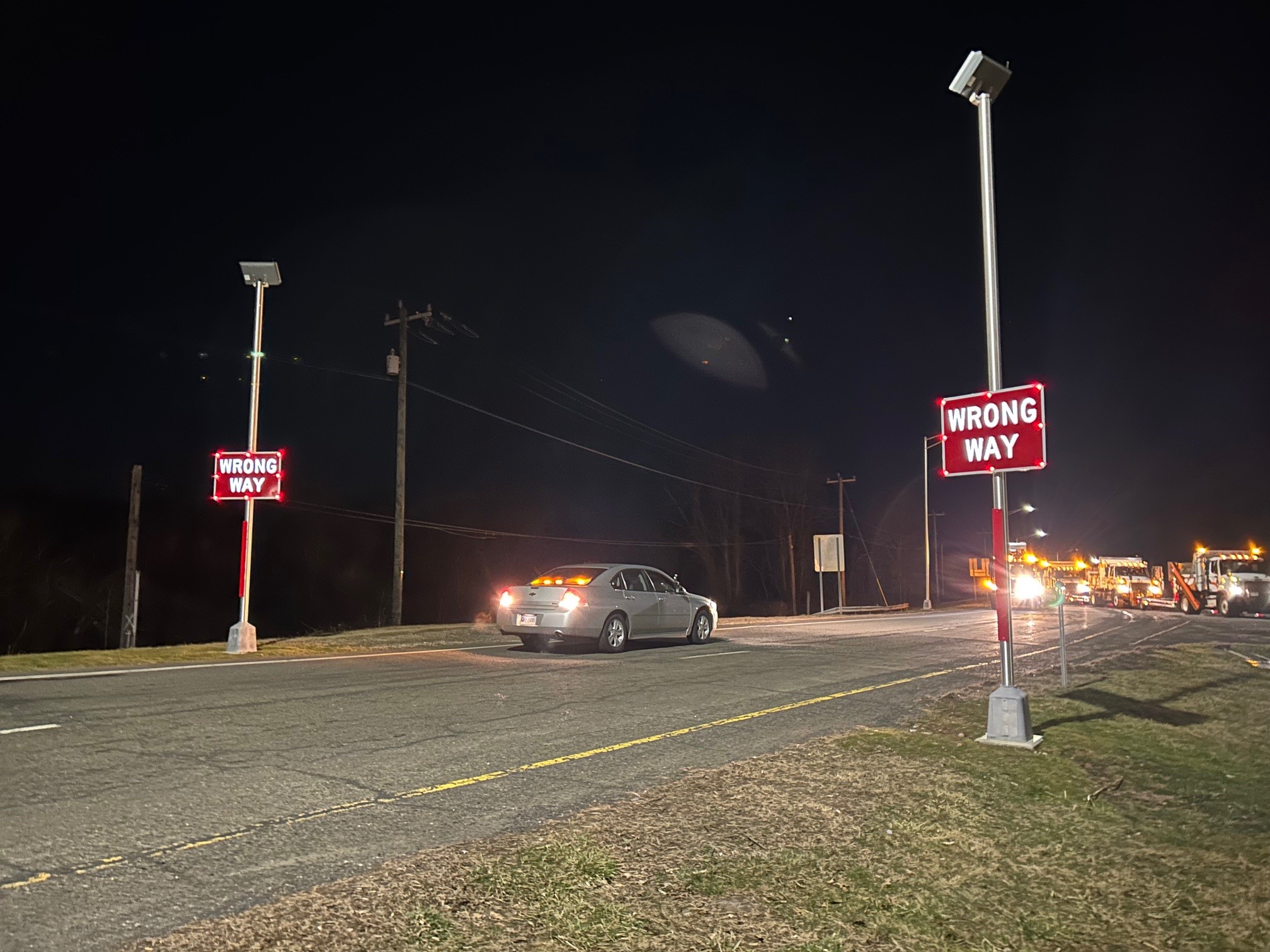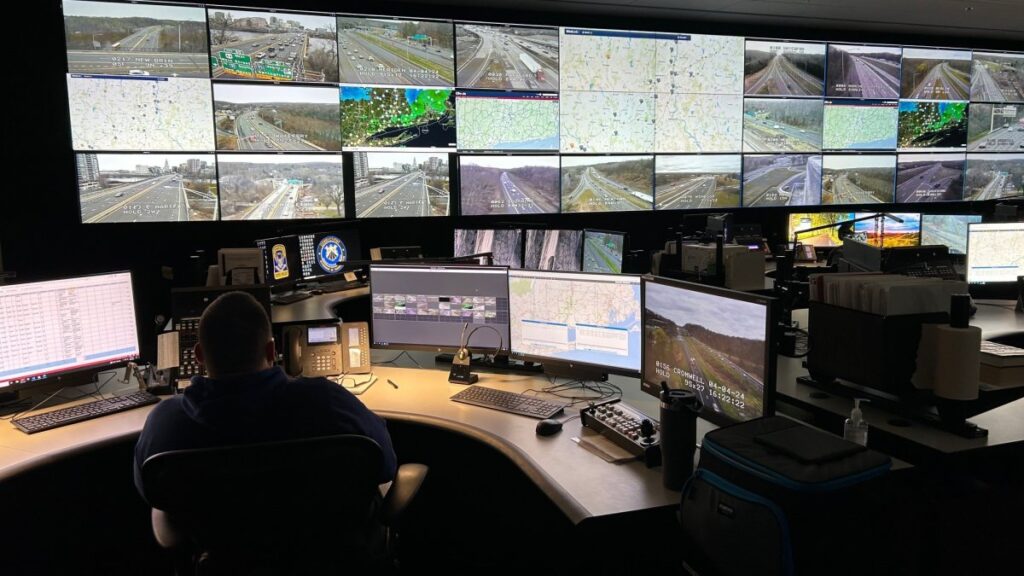When special highway signs are illuminated by wrong-way drivers, people are quick to take action in several locations, including at the Department of Transportation headquarters in Newington.
“You'll get an alert within seconds,” said CTDOT Highway Operations Planner Aidan Neely.

Neely explained that the technology being installed on the freeway ramps alerts the freeway ramps and state police to dangerous drivers.
DOT staff can monitor what is happening live and provide updates to officers.
“We went to the traffic cameras and continued to follow that vehicle wherever it was going at that point and tried to intercept it. Then we could work with state police to make that intercept happen.” Neely said.
Since the scheme began, warnings have been issued for seven wrong-way drivers.
And in all cases, including one on Interstate 691 in Meriden, drivers stopped and turned when the LED lights went out.
“This is a perfect example of people self-correcting and realizing that they were not only putting their lives at risk, but people's lives as well,” Neely said.
The push for the project came after 23 people died in wrong-way driving accidents in the state in 2022.
“These are head-on collisions, and these are absolutely violent and horrific crashes,” said CTDOT spokesman Josh Morgan.
DOT has identified 236 ramps that are considered high-hazard.
That could mean the uphill and downhill are next to each other, or there are bars and restaurants nearby.
Traffic engineering jobs can only do so much because data shows that alcohol is involved in virtually all wrong-way drivers.
“Ultimately, it's up to the person to make their own decisions, be careful and make sure they don't drink and drive,” Morgan said.
The current goal is to have this technology installed in over 100 locations by the end of the year. DOT is committing $60 million to move this forward.

